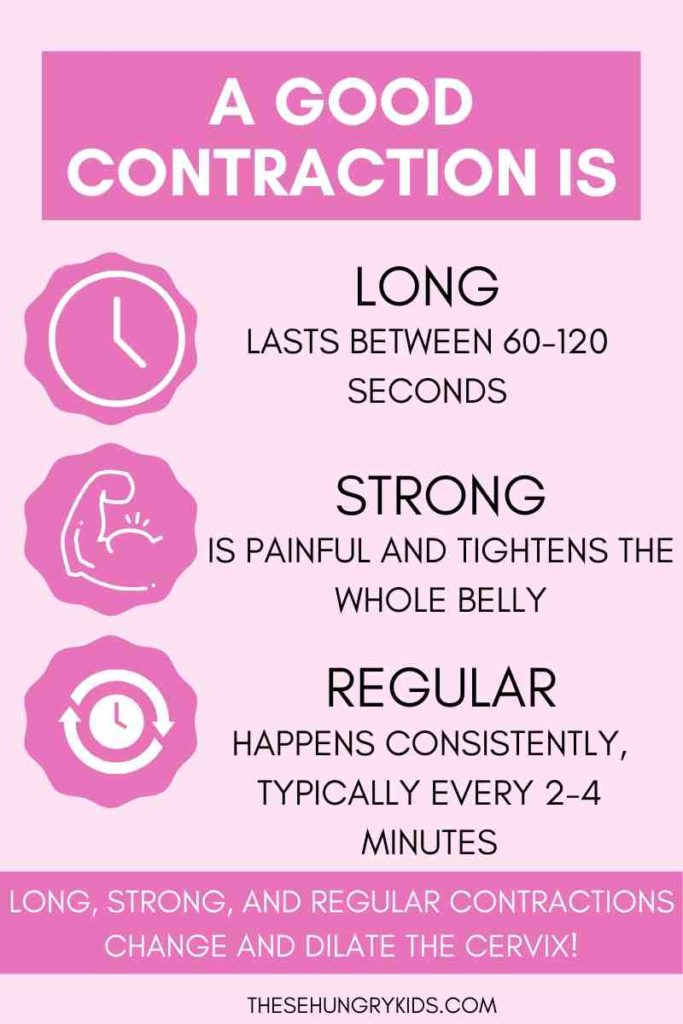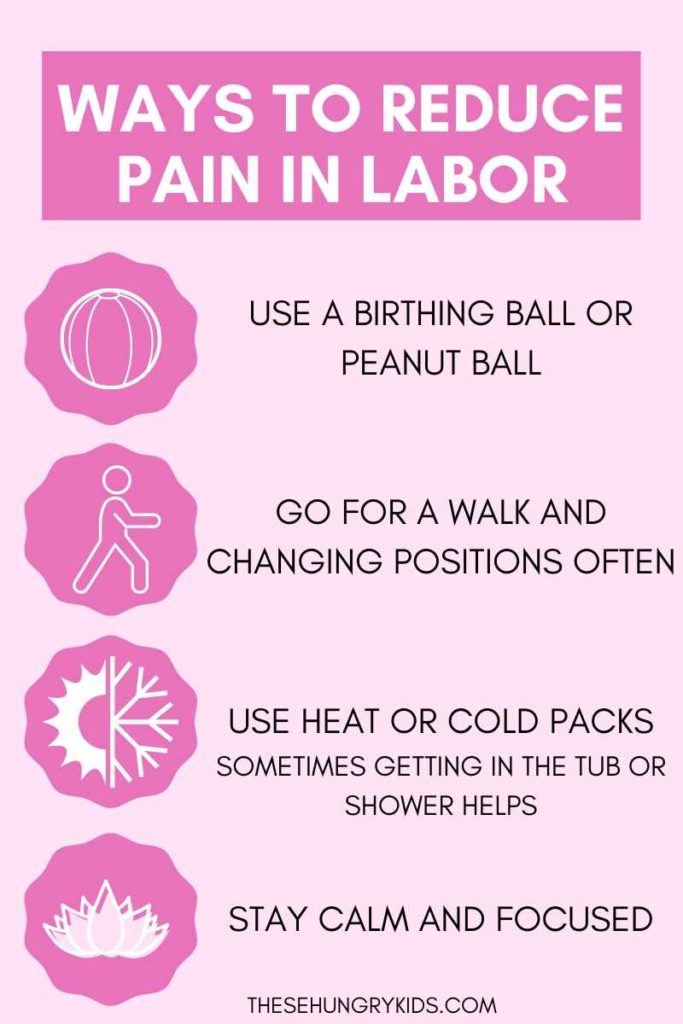Labor inductions are a very misunderstood topic! Learn some common labor induction misconceptions, and what the facts are instead!
Hearing that you need to have your labor induced can be frightening! Especially when so many well-meaning friends and family members have their thoughts and opinions to share about it.
Labor induction is when your OBGYN or midwife wants to intervene to get labor started before your body has gone into labor on its own.
Sometimes a baby is safer out than in, or sometimes continuing with the pregnancy can put the mom’s life at risk. There are many reasons your provider may recommend a labor induction.
My personal experience with labor inductions
I have been induced for both of my pregnancies, and I will likely be induced with my current pregnancy! This is because I am a type 1 diabetic, and my placenta will age faster than if I did not have diabetes. My risk for stillbirth goes up significantly after 39 weeks! You can read more about my birth stories here.
I had lovely inductions and vaginal births with both of my children!
And as a labor nurse, I see so many babies born successfully by induction.
So, it definitely makes me cringe when I hear all of these labor induction misconceptions!
I decided to write this post after a popular influencer posted an infographic loaded with misinformation about labor inductions. In fact, some of the terms and complications she referenced were completely made up! As in, she talked about conditions that don’t even exist!
This person has 20K Instagram followers, so her audience isn’t small. And she is so confident in her information that there was no talking her out of it.
At first I laughed, but then I thought, “how many pregnant women are reading this and thinking it’s the truth? How many people will trust this misinformed stranger on the internet over their doctor?!”
I couldn’t keep my mouth shut, so I had to write this post!

As always, here is my disclaimer: My mission is to prepare and inform, not advise. The information in this post is purely for entertainment and is not meant to replace the advice of a medical professional. I always adhere to HIPPAA policies, any similarities to yours or anyone else’s story is purely coincidental. Please see my disclosure policy for more information.
Common misconceptions about labor inductions
1. Having a planned labor induction means I get to pick the baby’s birthday!
Oh boy, I hear this one a lot!
People will tell me they scheduled an induction for a certain day to honor their grandfather/grandmother/beloved one that shares the same birthday…
Inductions can take days sometimes! Yes, you read that right!
If you’ve had a baby before or are already starting to dilate or efface, your induction will likely take less time than someone who has never had a baby before or has a very closed and thick cervix. Not sure what some of these words mean? Check out this post.
Some of the medications used to get the cervix softened and ready for labor can only be given every 4-12 hours! So time can really add up if you need a few doses of those medications.
There are ways you can help to speed your labor along. I talk about those in this post.
Related: Can prenatal massage induce labor?
2. Pitocin, or oxytocin, is the only medication used for induction.
While this is true for some people (particularly those with a history of c-sections), there are many different ways to start labor!
Additionally, pitocin is often needed to make contractions strong and more frequent, though other medications may put your body into labor, too.

Other ways to induce labor:
- Some providers will do a “membrane sweep” where they try to separate the bag from the lower part of the uterus. This causes a release of hormones that may kickstart labor.
- There are also medications called prostaglandins that get the cervix softened and ready for labor! These include cytotec and dinoprostone, for example.
- There are also foley balloons, or Cook’s balloons, that can get the cervix starting to dilate! These are inserted by the physician above the cervix to put pressure on the cervix and start dilation. Typically they can dilate your cervix to between 3-5 cm.
- For a mom that has had a vaginal birth before, breaking the water may also kick start labor. With my second child, once my water was broken I went into full blown labor without any additional medications!
3. Inductions make labor more painful
There’s really no way to measure how painful labor is, and there are so many factors that come into play!
The position of the baby and the size of the baby are two things that come to mind when I think about things that affect pain in labor.
With inductions, the pain tends to last longer than if you went into labor naturally in the comfort of your own environment. It’s definitely a little harder to be in pain in an unfamiliar and uncomfortable place, which can alter your perception of the pain!
There are many different ways to relieve pain in labor that don’t involve medications.

4. You have to get an epidural if you are induced
Again, this is not true!
I have been induced twice, and I did not have an epidural (or any pain medications) for my second child.
Epidurals can be a great way to get some pain relief and rest when you’re in labor. But both moms that are induced and go into labor naturally choose to get epidurals!
Labor hurts, no matter which way you do it!
There are also a ton of misconceptions about epidurals. Read what they are here.
5. Inductions are unnecessary and only done because it’s convenient for the doctor
One of the claims this person posted on Instagram was that “inductions are only done for convenience.”
I was shocked that someone with no medical background would make such an accusation!
There are many times when it is safer for the baby to be born than to stay pregnant. Sometimes it’s because of a risk to the mom as well.
While natural labor and birth is a great goal, when pregnancy becomes too risky, inductions are a great option.
And I would actually argue that inductions are more inconvenient for a doctor, since they have to stay and monitor the patient throughout their induction. As I mentioned before, this could mean days!
Some of the reasons for labor inductions include:
- High blood pressure
- Pre-eclampsia
- Infection
- Gestational or pre-existing diabetes
- Cholestasis
- Placental failure
- The baby is not looking great on fetal heart tracings, or there is a significant lack of movement
- You are over 41 weeks pregnant and there are signs the placenta is aging
- Your water has been broken for a long time and labor has not started yet (risk for infection)
- You have very low or very high amniotic fluid
- The baby’s growth has stalled
6. Inducing labor leads to c-sections.
A study you can read here actually found the opposite!
I’ve heard many women say that “inductions automatically lead to c-sections” or that “being induced means the doctor controls your birth.”
This just isn’t true. While it’s certainly different than letting your body go into labor on its own, inductions are generally very safe and are often successful.
You can have a very honest discussion with your provider about their c-section rates after inductions. There are some providers who are quicker to grow impatient with long inductions than others.
C-sections can be a scary thought for some, but it is a wonderful way to give birth if necessary. No matter how you give birth, you are amazing.
What other misconceptions about labor induction have you heard? I hope this helped clear the air for you, and gave you some valuable insight about inducing labor!


